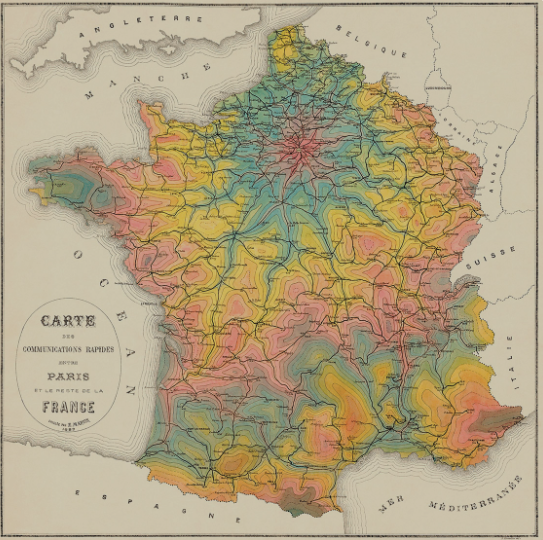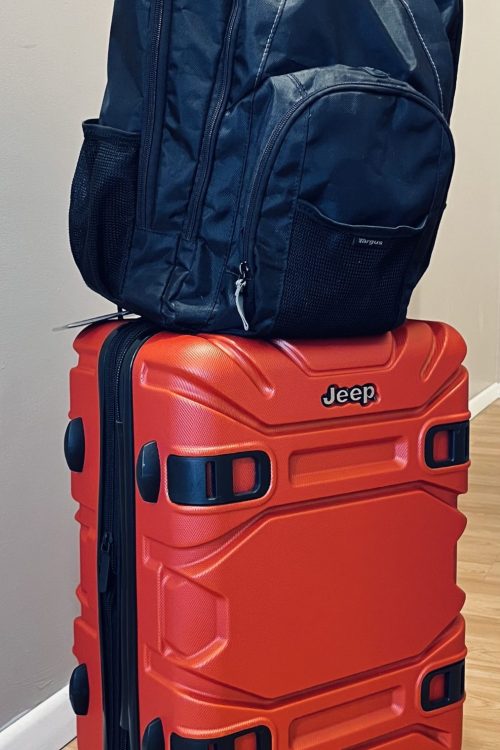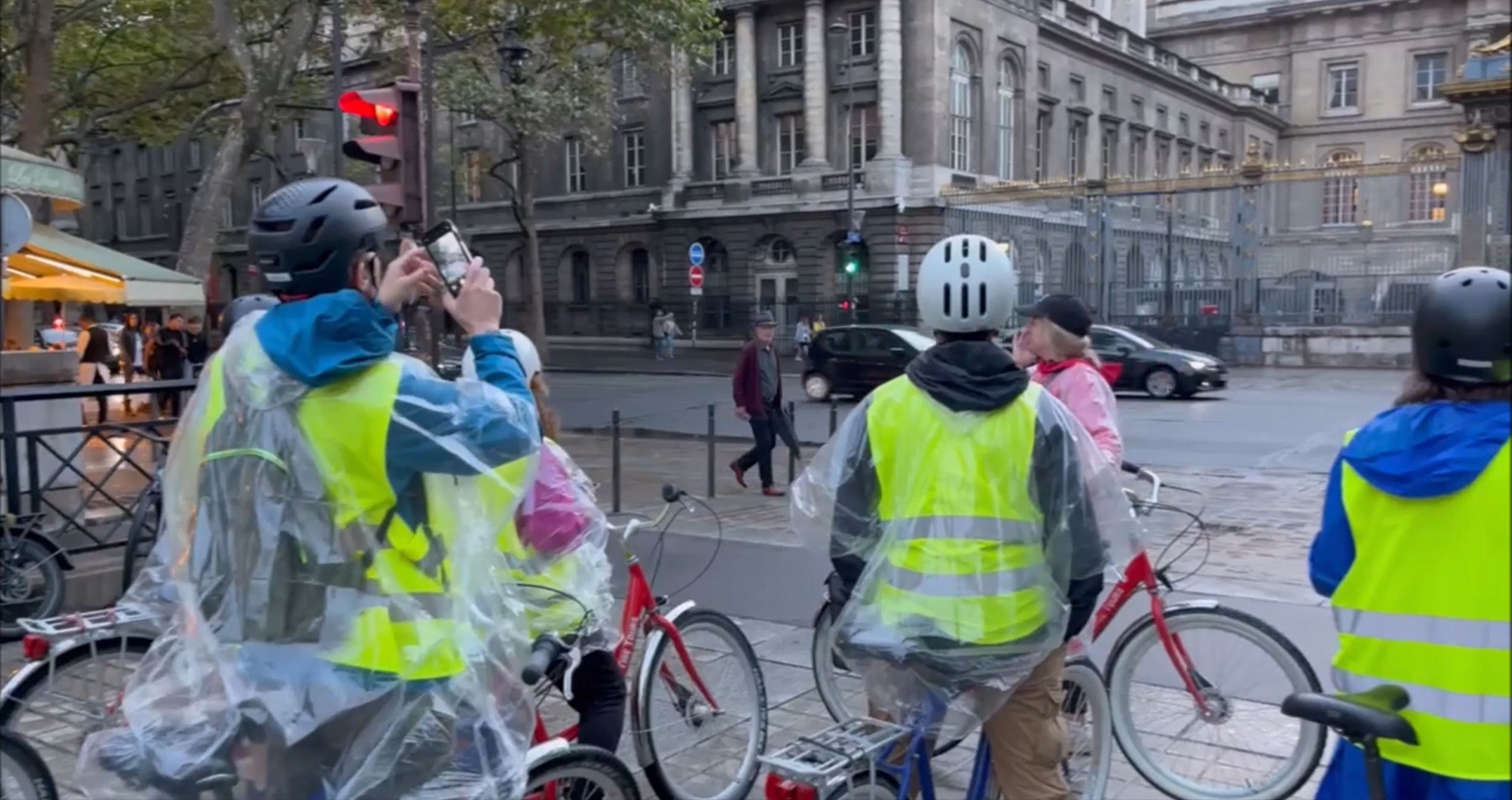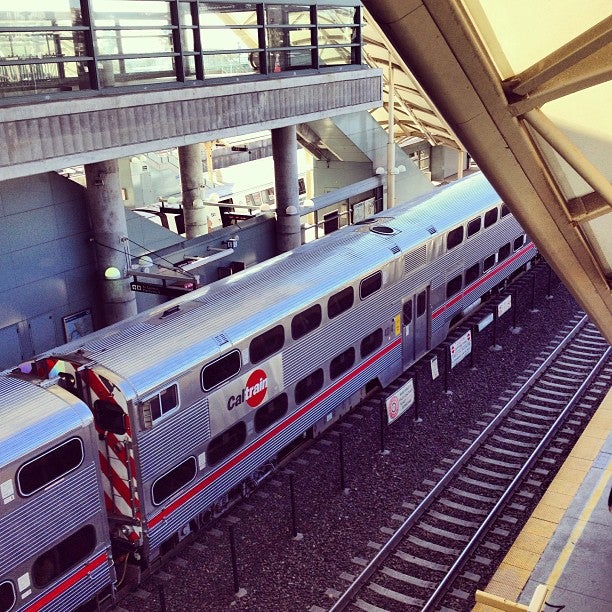First Person Report: Foreign Travelers Using Mass Transit to The Max
by Greg Larkins

My wife and I recently challenged ourselves to use mass transit as much as possible on a trip to Paris and Amsterdam. This started from our journey from our home in San Jose to San Francisco International Airport and concluded with our journey back to our home. It covered our travels within the cities and from country to country.
The key to doing this is packing very lightly to avoid having any checked bags and to be easily mobile from each mode of transport to another. We each carried a backpack and an H20”xW14”xD10” (11.4lbs) suitcase with rollers. This is not hard if you use hotel sinks to wash and dry clothes overnight. Wrinkle free and light clothes (95% nylon, 5% spandex) work great.

Although we wanted to challenge ourselves to go 100% mass transit door to door, it just wasn’t practical. We did cheat and took an Uber from our home to the Caltrain station in San Jose and did the same on our return. Everything else was mass transit. From San Jose, we took Caltrain to Millbrae, and then transferred to BART to get to SFO. At SFO we took our flight to CDG-Paris airport.
Once through passport control, we each bought a Navigo Easy card for 2 euros each and bought ten trips on each one. Simply add more trips at any Navigo machine at all Metro stations. This card works for the entire Metro system within Paris, however to and from the airport is about 10 euros. To do that use the RER B, aka the suburban train which services 7 of the larger Metro stations, then take the Metro to your final destination. Using Google Maps, we navigated Paris easily via Metro. To stay in the spirit of circumventing carbon emissions, we even took a 3-hour night tour of the city on bicycles.

Next, it was on to Amsterdam via train. The whole journey took about 3 hours with a few stops in Belgium and the Netherlands. Outside the main train station in Amsterdam, you will find a GVB office where you can buy multiple day passes to use their metro, bus and tram systems combined. Again, you can use Google Maps to navigate this system, or better yet, download their GVB app for iOS and Android for even more precise scheduling. Going to the airport for our trip home from our hotel did not cost additionally and was accessible by bus.
The flight from Amsterdam to SFO was supposed to take about 11 hours; however, it was quite a bit longer due to flight delays. Although tired, we were preparing for a non-stress trip home from the airport, again using BART and CalTrain. The comparatively bad conditions and aromas of the BART train were immediately noticeable. Even the oldest trains on the Paris Metro were so much better than these. Thankfully the ride was short to the Millbrae station.
Upon disembarking BART we saw no signage to get to CalTrain. After walking around, we did see turnstiles and assumed that was our path. We passed through, but again, were not seeing any signs indicating which track was for southbound or northbound. There was a person inside the CalTrain booth, but she could only tell us that one of the two tracks was down, and that both north and southbound trains were using the same track. She seemed annoyed that we kept pressing her for more information, like when the next train was coming and for what direction. On top of that, there were no working signs that gave us that information, and the CalTrain app was not even close to being accurate. It was so much easier using mass transit in Europe than the so-called “technology capital” of the world.

I am embarrassed by that. Especially since this area has so many non-English speaking visitors whose experience must be significantly worse.
The good news is that ridership is rising to almost pre-pandemic levels on modes of mass transit in the Bay Area. It is my hope that the increased revenue stream from this expansion will be used to modernize and make the systems more user-friendly. In my view, this would go a long way to take
people out of their cars and to aid their ability to challenge themselves to use public transport when
they travel internationally. It can be done. We just need to have the will to do it. I will be writing both BART and CalTrain about our experience, suggesting specific improvements that could easily be made right away.